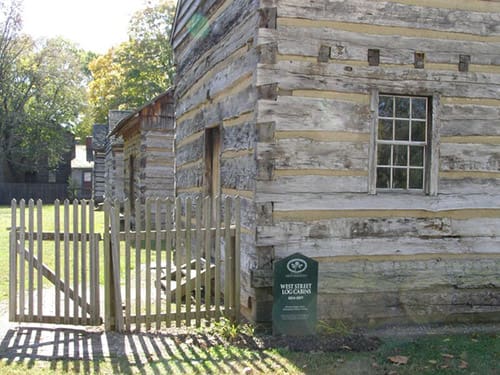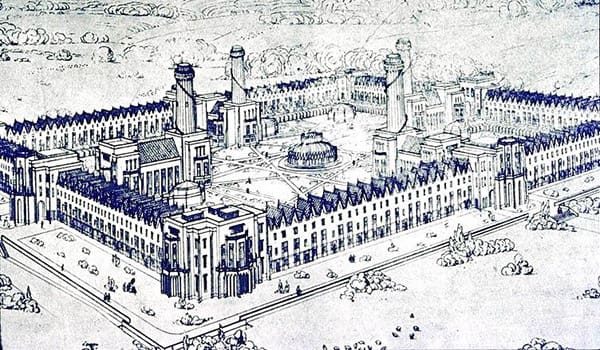
Ahhh, Utopia. Everyone wants to live there. But no one knows where it is. People have tried to create utopias for centuries. Books and movies have been written about Utopia. It is a dream that has been around for many years.
But what is Utopia? The common definition is that it is the perfect place to live. The quintessential Utopia was the Garden of Eden, where everything was beautiful and there was no sense of good and evil. Everything was perfect, until…
Harmonists Settle Harmony Indiana
Well, what does that have to do with New Harmony, IN? Let us start at the beginning of New Harmony’s story. The town was first settled in 1814 by George Rapp, a member of the Harmony Society, who was seeking settlements that would allow them to practice their religion in isolation. The town was named Harmony, after their society. They had fled their town in Pennsylvania, with the same name, due to the rising population in the area, which infringed upon their desire for isolation.
So, in a sense, New Harmony was founded upon the idea of it being a Utopia for the Harmonists. A place where they could live in isolation and practice their faith. They chose this area for its isolation, but also for its flat land and proximity to nearby hills for vineyards, and rivers for transportation. But perhaps, they chose it too well.

Harmony began to attract new settlers, many from Rapp’s community from Wurttemberg, Germany. The problem, as stated by Rapp himself, was that these new settlers did not have the same moral and mannered life of the Harmonists. Perhaps, the beginning of the end to their utopia. They thrived as a town though through this period. The skill and work ethic of the Harmonists created a manufacturing hub. Visitors to the city remarked that they felt they were in the middle of Germany when they visited Harmony. With not only the culture of the people being German, but the economy was like any town in Germany.
But alas, utopias do not last forever. By the mid 1820’s, about 10 years after founding Harmony, the Harmonists put their city up for sale, and bought new land in Pennsylvania, still in search of their utopian society. Pennsylvania had a higher German population, with folks who aligned more with their beliefs, and it also was closer to the bigger markets in the east, allowing them to thrive even more in their manufacturing businesses. The last Harmonist left Harmony, Indiana in May 1825. They had sold their land, including all the buildings to Welsh industrialist, Robert Owen.
Robert Owen Buys Harmony to Build His Utopia
Robert Owen had his own vision of utopia. His vision was based on communal living where the residents would thrive through education, science, and technology. He bought this city, that was ready made with all the buildings already in place, to bring his version of utopia to practice. He renamed the city New Harmony to signify this new start.
As is always the case, utopia is hard to come by. He invited anyone to join their community, which results in a mixed bag. Some who believed in his vision, and others who did not. He did attract educators and scientists to join him in New Harmony and help him realize his vision. They created a socialist constitution that was intended to draw out this ideal. But it lacked enforcement and authority, and eventually gave way to those who called for individual sovereignty and private property.

Robert Owen’s Vision of New Harmony
Owen left New Harmony in 1827, returning to the United Kingdom. The land and assets in New Harmony returned to private use, and thus ended another vision of utopia.
There are still around 30 structures that remain in Historic New Harmony, from the Harmonist and Owenite utopian communities. This district is now considered a National Historic Landmark.
Reach Us
Address
11 S Locust St
Poseyville, IN 47633
Visit
M-F: 8am – 4pm
Sat: 9am – Noon
Contact
(812) 874 – 0100
[email protected]
